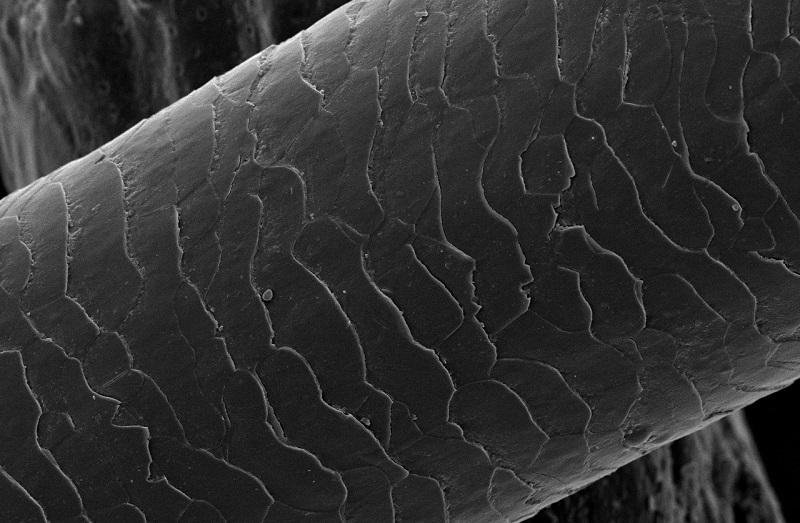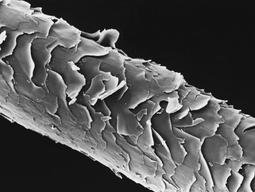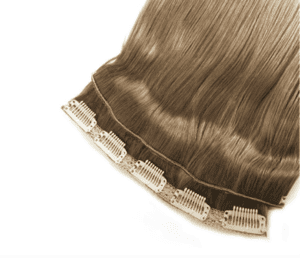
Many people are noticing the difference in quality between Remy and non-Remy hair. Have you ever wondered what raw materials they are?
Well, Remy hair is made of natural human hair that has been collected from the head of a single donor in one sitting. Another name for Remy hair is Virgin Remy human hair. Virgin hair is hair collected from the heads of girls under 20 years old. This means that virgin hair is the highest grade in Remy hair
Non-Remy hair can be made up of many different types of human or synthetic fibers. The main differences come down to texture, color, and durability.
1. Remy hair is more expensive than non-remy hair.
Remy hair is more expensive than non-Remy hair.

Remy comes from only one donor's head in one sitting, while non-Remy can be made up of multiple sources, like synthetic fibers, or different human heads.
It is important to note that Remy hair can also be "Remy" if it was collected from one donor in multiple sittings (because the cuticles are preserved).
Non-Remy hair comes in all types of textures and colors, there is no guarantee that you will receive the same texture or color as shown on the website.
Non-Remy hair can be made of synthetic fibers like Rayon, which isn't great for your natural hair underneath!
All of this makes Remy hair significantly higher quality than any other type of human or synthetic fiber used for extensions. That means that it will last much longer than non-Remy hair.
2. Remy hair has a higher quality of cuticles and ends
Remy hair has a higher quality of cuticles and ends.
One reason Remy hair is so much more expensive than non-Remy, though, is that it comes from one donor whose human hair was never colored or chemically processed in any way.

The end result? Silky smooth locks with healthy-looking cuticles and roots! Non-Remy hair comes from many different sources that have likely been subject to harsh chemicals. The result? Dull, dry ends, and sometimes even split or frayed strands!
The cuticle is the outermost layer of your hair.

It protects the internal structure of your strands, which are called cortical cells.
The cortex makes up most (90%) of each strand, and it's what gives you strength and elasticity!
Cuticles prevent water from breaking down these protective layers in order to keep them intact.
The cortex is what gives your hair its color.
When you strip this away with chemical processing, not only do you lose the pigment that makes it look shiny and healthy, but you also dry out your hair drastically!
This causes split ends and breakage because there are no longer any protective layers to keep strands intact.
Non-Remy hair is made up of many different sources, and some may have been colored or chemically processed.
Because the cuticles are facing in every direction, it's more difficult for water to get into your locks.

This causes a dull appearance that isn't as healthy-looking! A lot of people don't know this difference because they don't look at the cuticles of their hair.
So many people think that Remy hair extensions are more expensive because it's 100% human, and non-remy can be synthetic or mixed with other types of fibers (like animals). But what you don't realize is that your strands are made up mostly of cortex cells!
3. Remy hair is less likely to have tangling problems or shedding

One way Remy has this advantage over non, though, is that it tangles much less often!
Because Remy comes from one donor's head in one sitting (and the hair cuticles are preserved), there isn't as much friction between hair strands since all the hair cuticles are facing the same direction.
Non-Remy hair comes from many different sources, and because of this, the hair strand has more friction!
The non-Remy human hair cuticles are going every which way instead of all in the same direction with Remy human hair. This is why your locks end up getting tangled a lot easier with non-Remy extensions!
Non-Remy hair also sheds and breaks much more often!
When you wear extensions your scalp gets rubbed a lot, causing irritation.
This causes the hairs to be pulled out at their roots over time, which is why we see so many people with shorter locks after they've worn extensions for a while.
The shedding happens over time because the cuticles are all facing in different directions, so they're not as strong.
With Remy hair, you don't have to worry about this problem at all! Your remy human hair extensions will last much longer with higher-quality strands that won't shed or tangle. This is why it's worth spending extra money on them if you can afford it!
4. Non-Remy hair can be dyed, but it will not last as long as Remy
One reason this happens is that the cuticles are all facing in different directions with non-Remy extensions!

This means that your hair strands have much more friction between each other when you try to dye them. This leads to patches of hair that are actually faded before the rest, which ends up being a problem.
With Remy hair extensions, all of your strands have cuticles facing in the same direction, so they can be dyed much more easily!
This means you can get them done anywhere without worrying about uneven coloring or fading. This is another way to tell if someone has real Remy hair or not!
With Remy, the color will last much longer because there's less friction between strands. This means your extensions won't fade as fast and they'll keep looking like new even after you dye them.
Remember that non-Remy hair can be dyed easier than real Remy, but it won't last nearly as long!
You'll need to touch up your dye more often with non-Remy extensions, and they will fade much faster. This is especially true if you choose the wrong color like red or blonde -- these won't last as long because of the harsh chemicals in them that cause fading over time. With Remy hair, though, you can get darker shades that last much longer!
Remember to take these differences into account when you're choosing your extensions so you get the best quality possible.
You don't have to spend a lot of money for Remy hair if it's out of budget, but non-Remy is not nearly as good in terms of quality and healthiness after it's been colored.
You'll need to take extra precautions with non-Remy hair in terms of how you color, wash, and dry it. It will not last nearly as long when you put effort into taking care of it!

Remember that Remy extensions are more expensive because they're 100% human and come from one donor's head -- this means your strands are all the same length and thickness.
Non-Remy hair is cheaper because it's not real human hair, but this means you might get different lengths or textures in one pack of extensions!
It can be difficult to find a good match with non-Remy unless you're planning on dying your locks every color under the sun. Be careful when you're shopping for non-Remy hair, because it's not always easy to tell if the extensions are real or fake.
Remember that Remy is made from 100% human strands while non-Remy includes synthetic materials like nylon and acrylic! If you want the best quality possible, choose Remy. It might be more expensive but it's worth the investment.
Remember to take these differences into account when you're choosing your extensions so you get the best quality possible!
You can use Remy hair even if it's more expensive, just remember that non-Remy will not have as long of a life span or be able to hold dye quite as well.
5. The colors of the two types of hairs are different
The colors of the hair are different from remy hair and non.
Remy hair has a different color at the head and at the end. You can observe the natural hair of a normal person, the color of the root and the end of the hair are not the same, usually, the color of the end of the hair will be a little lighter than the color of the root.
The non-Remy hair, because of the treatment, the roots and tips are messier, the cuticle direction is not consistent, resulting in the color of the tips and roots of the hair after dyeing the same touch.
There are so many methods to distinguish them, and the difference by color is one of them
Conclusion:
I hope this article can give you practical help:)









